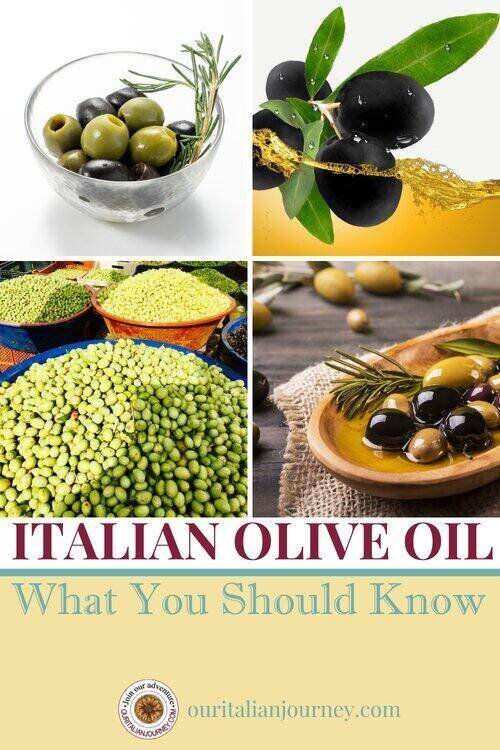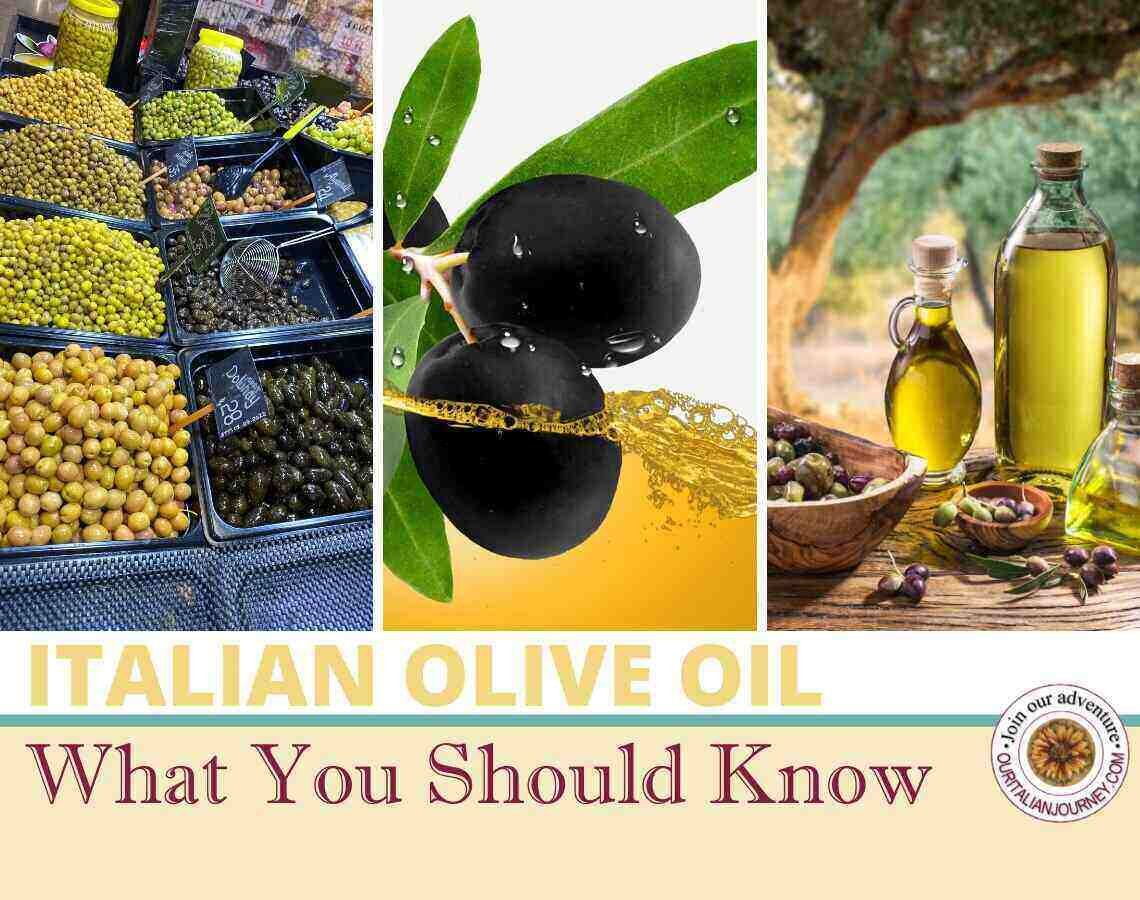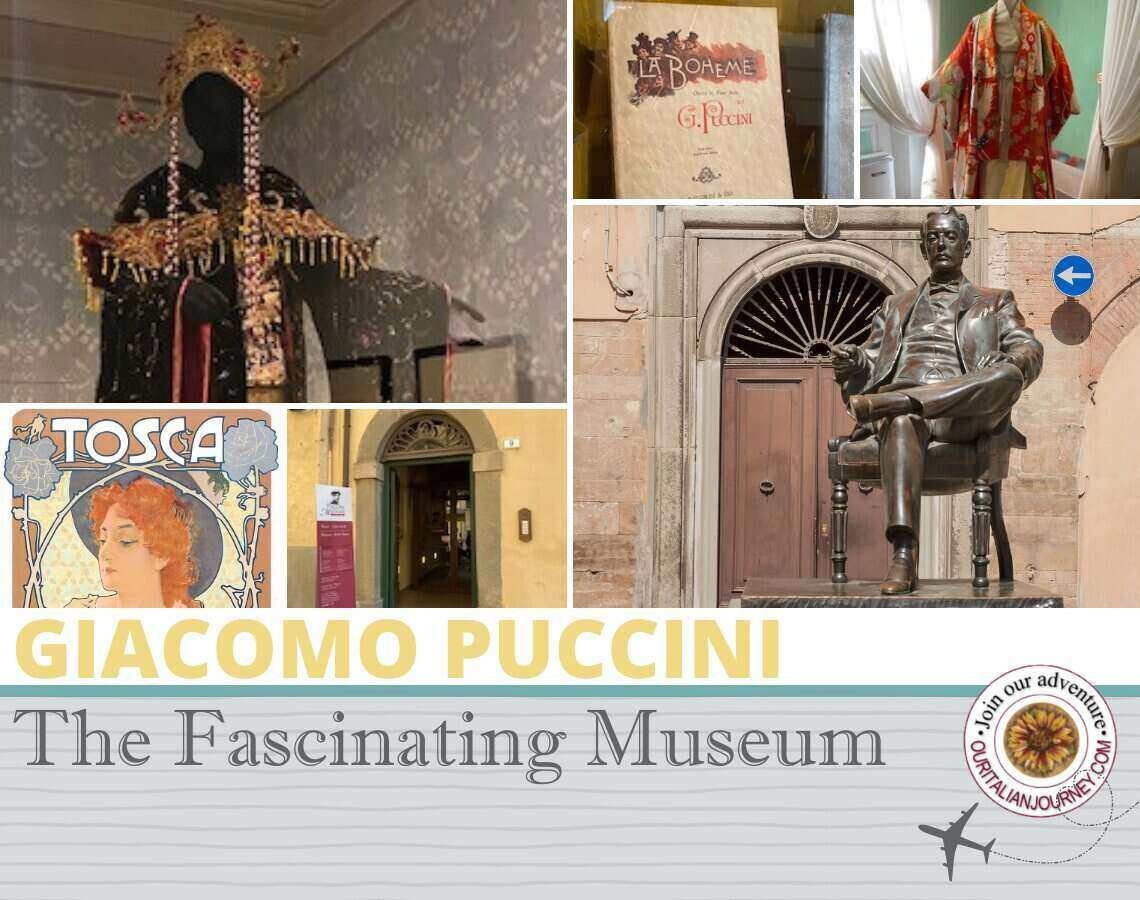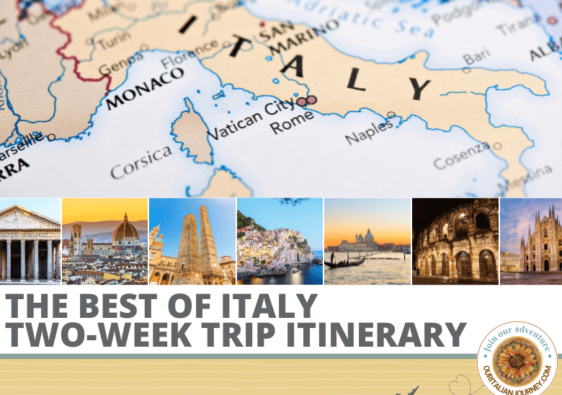Italian Olive Oil
Today’s post is all about Italian olive oil. In thinking about posts you might like, I have written about kinds of pasta, sauces, and wines, and for some reason – olive oil popped into my head. I started reading about the subject and was surprised at what I learned about a product as simple as olive oil.
This post contains affiliate links that help keep this website running. By purchasing through our links, we make a small commission at no extra charge to you. Thank you for your support!
For many years now I thought I was getting true 100% Italian Extra Virgin Olive oil (EVOO as it is referred to) when shopping at the grocery store. After all the label stated what was inside was pure Italian extra virgin olive oil and I blindly trusted the label since you cannot lie on a label, right?
Fake Olive Oil?
What’s the Common Practice?
Well, I guess you can, and it is done every day by some of the biggest names in the olive oil industry. According to the Canadian Food Inspection Agency (CIFA), twenty percent of Italian EVOO being sold today is fake. That’s right, FAKE. It may be EVOO but it could be made with not just Italian olives.
It is a common practice to use olives from Ethiopia, Spain, Greece, and Portugal or these companies use a low-acidity oil mixed with a higher-acidity oil and call it EVOO. True EVOO should have an acidity level below 0.8% and the lower the number (0.4% or 0.3%) the better. If the manufacturer does not list the acidity level it probably is not a true EVOO. A UC Davis study showed more than sixty-nine percent of imported EVOO was not extra virgin olive oil but a blend of high acidity oil with a low acidity oil and marked EVOO.

Consumers Beware
The following brands have been suspected of either trying to deceive consumers with deceptive wording on their packaging or using lesser quality oils and blending them and marking them EVOO.
Manufacturers such as Bertolli, Colavita, Filippo Berio, and Pompeian among others were named in the 2011 report. Today most have changed their wording and manufacturing practices but some still will not give an acidity number instead they use terms such as “pure olive oil,” “low acidity olive oil,” and “cold-pressed” olive oil. You might ask why companies use shady practices to sell their olive oil. Olive oil is a 17 billion-dollar-a-year business and some companies will cut corners to make higher profits.
It’s that simple.
While extra virgin, virgin, and pure sound similar they are actually very different. There are four main categories of olive oil according to the International Olive Oil Council. The main difference is in the amount of free fatty acids each contains.

Acidity Levels in Italian Olive Oil
Here are the acidity levels of the four types of olive oil:
- Extra virgin olive oil has less than 0.8% of free fatty acid and no tasting defects. The olive oil must be mechanically extracted meaning these olives are crushed and strained. No chemicals are to be used in this process and there is a minimal amount of heat used as well.
- Virgin olive oil has between 0.8% and 2% of free fatty acid and may contain slight taste defects.
- Regular olive oil will have between 2% and 3.3% fatty acids and will have some taste defects as well. This olive oil is sometimes labeled as “pure olive oil” which means nothing in this case.
- Lampante virgin oil comes from the Italian for “lamp oil.” These oils have 3.3% or higher fatty acids and are not for consumption until they are refined.
Regions in Italy Growing Olives
There are approximately 538 different types of olives grown in Italy. Each region of Italy has its own variety of olives and uses them in olive oil. Here are a few of the regions and the olives they produce:
The largest olive oil-producing area in Italy is in the south with Puglia and Calabria producing 68% of Italy’s production. Sicily is at 8%, and Campania is at 6% with Abruzzo, Tuscany, Umbria, Lazio, and other areas producing the remaining 18%.
Italian Olive Oil – It’s Good For You!
Olive oil is very healthy for you since it is rich in antioxidants which help lower cholesterol levels. It also helps reduce high blood pressure, works as an anti-inflammatory, and helps protect against diabetes.
I strongly suggest you taste the olive oil you use. Put a small amount of oil in a cup or shot glass and put one hand over the top and the other hand under the cup then swirl. The heat from your bottom hand will slightly warm the oil while the top hand traps the aromas. Now smell the aromas then raise the cup to your mouth and slurp sharply. This gets the oil into your mouth in a spray and coats your taste buds. Take a deep inhale and coat your entire mouth and the back of your throat. Absorb the taste.
Olives harvested early in the season will have a more peppery and bitter taste. Olives harvested late in the season will have a smoother, buttery taste. Olive oil can sometimes have a fresh-cut grass taste which is good but it should never taste like mud, hay, or plastic.
Tips for Making A Good Choice
Here are a few tips to help you select the “good stuff”
- Check the pick/best buy date. Olive oil will be at its prime for about one year
- The label should tell you the manufacturer’s name or the varietal of olives used
- Pay attention to the label verbiage such as “imported from” on the bottle
- Look for the fatty acids content on the label. Also, look for keywords like “pure olive oil or low acidity olive oil” etc.
- The oil should be bottled in a dark bottle or tin. A clear container permits photo-oxidation spoiling the oil
- True Italian EVOO isn’t cheap. You can expect to pay from $20.00 to as much as $45.00 for a 750ml bottle. Remember, you get what you pay for.
What Do We Purchase?
Lastly, some of our friends ask, “What is the best Italian olive oil to buy?” For me, it has to be from Sicily. After all, that is where we are from. It’s a Sicilian thing. We like Partanna as it’s a family-owned business by the Asaro family. This oil is a first cold press EVOO but is also an early harvest, single olive varietal using noceliara del belice. It is also an unfiltered oil. Unfiltered doesn’t go through an extra filtering process which takes away the flavor of the oil.
For you, it will probably be from the region your family is from and that is perfectly alright. Just make sure you buy “real Italian EVOO” and not a cheap imitation. Try to stay away from the big names and do a little research for yourselves. Some of the best Italian EVOO I’ve had came from small producers that I never heard of. Try it you’ll love it.
Buona fortuna a te.










Thank you for the detailed information. The best olive oil I have tasted was at the Poggio Amorelli Vineyard and Winery. We did a private tour which included a wonderful late afternoon multi course lunch. My eyes and palate were opened to the wondrous taste of their olive oil and their fabulous balsamic.
Oh we agree, Jackie that personal homemade olive oil is the best. Hands down, we would purchase that way too! Thanks for commenting.